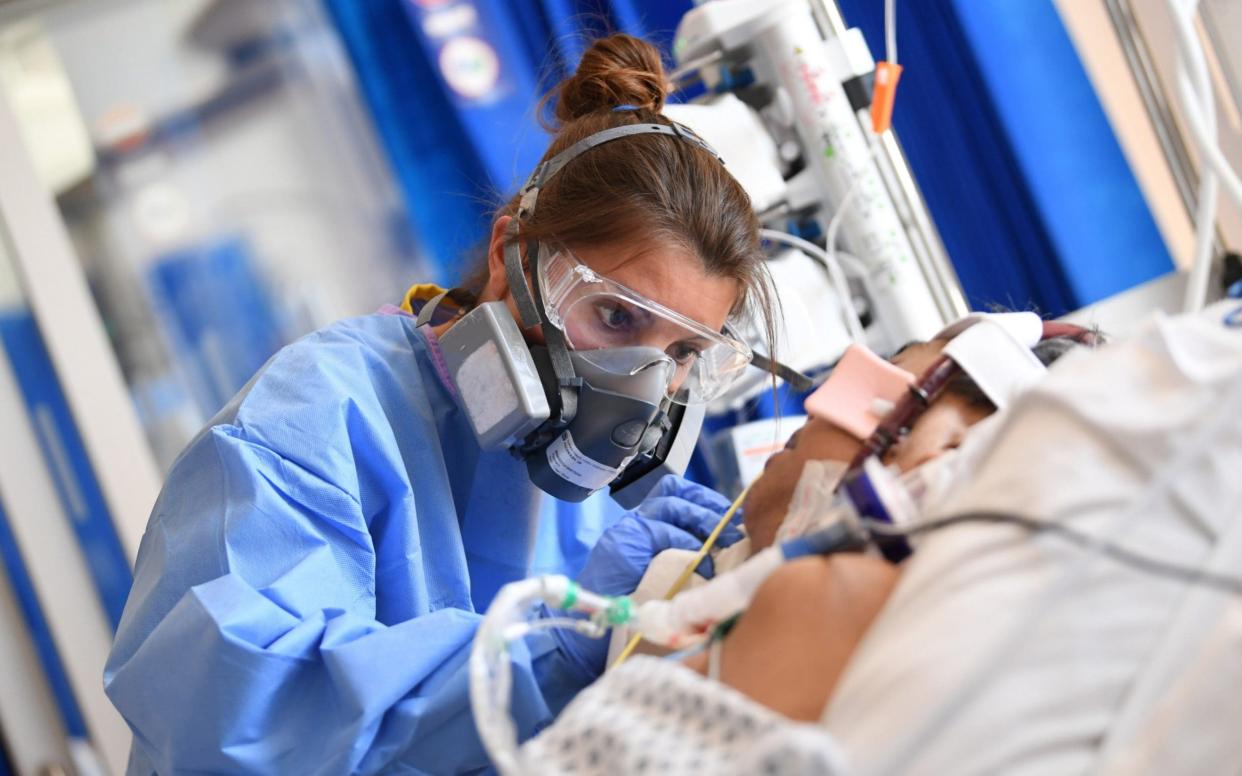Most cancer deaths happening at home as hospitals prioritise Covid patients

The majority of cancer deaths occurred at home last year as NHS staff were forced to prioritise Covid patients, government figures suggest.
The Office for National Statistics (ONS) found that the majority of deaths due to Covid-19 occurred in hospitals and care homes, while many deaths from other causes, such as breast cancer and prostate cancer, happened in private homes.
Researchers said that "many of these deaths at home were people who, in a non-pandemic year, may have typically died elsewhere such as in hospital".
The data has prompted experts to warn that such "displacement" of deaths from hospital to home "raises questions about whether Covid impaired people’s ability to choose where to spend their final days" and follows repeated calls for a public inquiry.
A total of 166,576 deaths from all causes in private homes were registered in 2020, compared with an average of 125,255 between 2015 and 2019, the ONS said, meaning that there were 41,321 extra deaths, or "excess deaths", in homes during the year.
Covid-19 was responsible for only 3,221 of these excess deaths, or eight per cent of the total.
The ONS said that deaths in private homes were above the five-year average for most causes. Breast cancer deaths were broadly in line with the 2015 to 2019 average - with 10,385 deaths compared with an average of just over 10,200.
However, more breast cancer deaths were registered in private homes than in hospitals, compared with the five-year average.
There were just over 3,900 breast cancer deaths in private homes in England and Wales in 2020, compared with just over 2,800 in hospitals. This compares with an average of just under 2,900 deaths at home and 3,400 deaths in hospital per year between 2015 and 2019.
For prostate cancer, 4,700 deaths out of a total of nearly 11,000 were in private homes in 2020 and just under 2,900 were in hospitals, compared with 3,300 in private homes and 3,600 in hospitals on average between 2015 and 2019.
The ONS also found that deaths from Parkinson’s disease increased by 66 per cent (616 excess deaths) and diabetes rose by 60 per cent (894 excess deaths).
In contrast, deaths due to "influenza and pneumonia" in private homes were eight per cent below the five-year average.
Responding to the data, Dr Veena Raleigh, Senior Fellow at The King’s Fund, the health think tank, said: "This huge number of excess deaths led to the largest fall in life expectancy since the Second World War.
"It is all the more worrying as improvements in life expectancy had already slowed significantly in the decade before the pandemic, with deep and widening health inequalities between the richest and poorest areas.
"Most deaths from COVID-19 occurred in hospitals and care homes, while many deaths from other causes, such as cancer, happened in private homes.
"Whereas hospital deaths from non-Covid causes were lower than in previous years, deaths in private homes were a third higher than in previous years, suggesting that many were people who might have typically died in hospital in a non-pandemic year.
"This 'displacement' of many deaths from hospital to home raises questions about whether Covid impaired people’s ability to choose where to spend their final days.
"While the NHS is delivering an admirable vaccination campaign, the pandemic isn't over yet –this year Covid-19 has already caused 57,000 deaths up to April 23."
Britons breaking rules to hug loved ones
Britons are increasingly flouting Covid rules and hugging loved ones, government figures reveal, with the lowest compliance rate of guidelines since last summer.
The ONS has published its weekly survey on the social impact of Covid-19, covering the period from April 28 to May 3.
Researchers found that compliance with most measures to stop the spread of the coronavirus remained high, with 87 per cent of adults reporting hand washing when returning home (the same number as last week) and 98 per cent using a face covering (97 per cent last week).
However, they also found that the proportion of adults avoiding physical contact when outside their home has fallen to 82 per cent, which is the lowest it has been since between September 9 and 13, 2020 (81 per cent).
The survey also found that just over one in five (21 per cent) adults reported staying home or only left for work, exercise, essential shopping or medical needs in the past seven days as restrictions ease; a continued fall since January 2021 (65 per cent between January 13 and 17).

